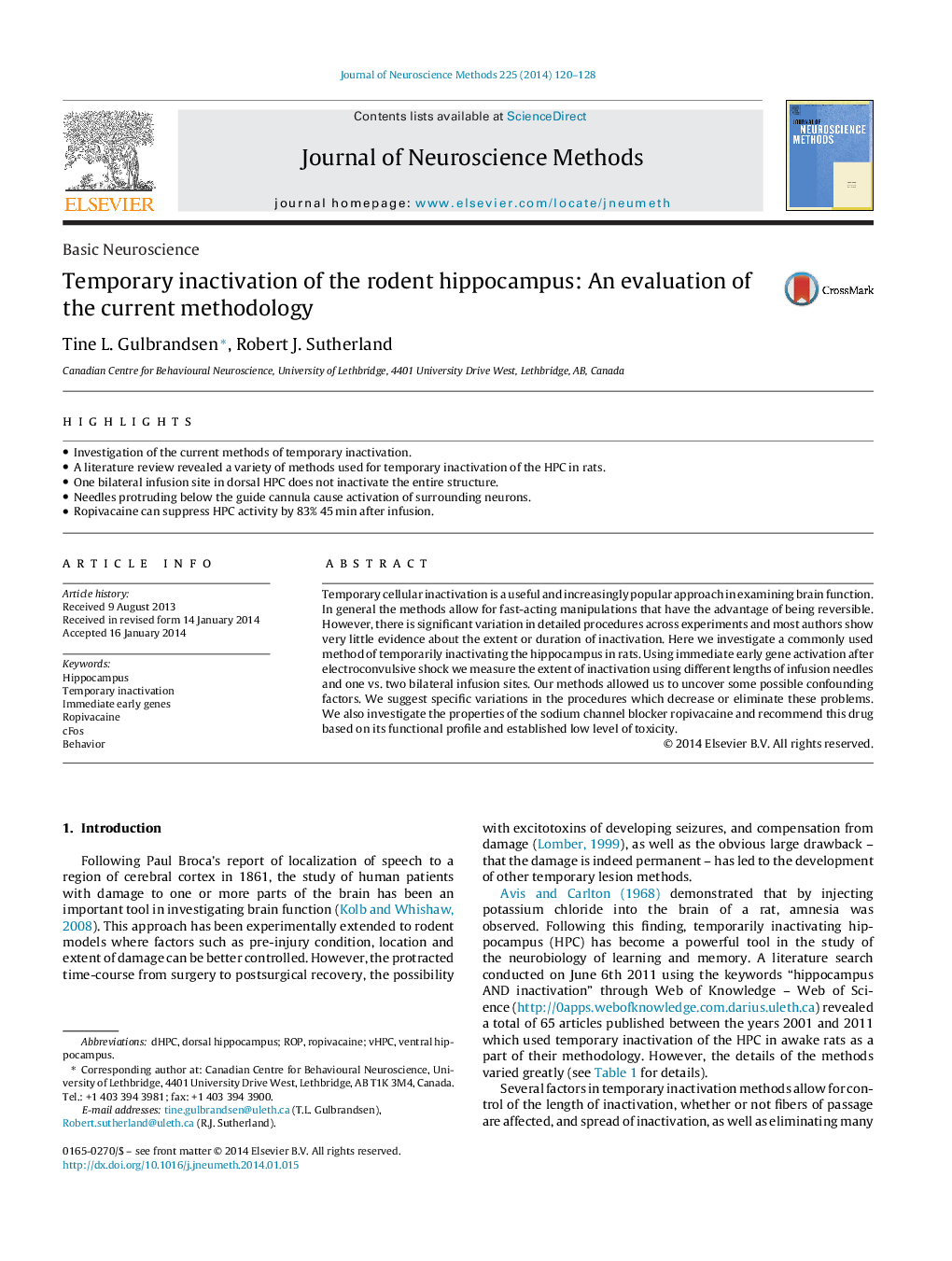| Article ID | Journal | Published Year | Pages | File Type |
|---|---|---|---|---|
| 6268807 | Journal of Neuroscience Methods | 2014 | 9 Pages |
â¢Investigation of the current methods of temporary inactivation.â¢A literature review revealed a variety of methods used for temporary inactivation of the HPC in rats.â¢One bilateral infusion site in dorsal HPC does not inactivate the entire structure.â¢Needles protruding below the guide cannula cause activation of surrounding neurons.â¢Ropivacaine can suppress HPC activity by 83% 45 min after infusion.
Temporary cellular inactivation is a useful and increasingly popular approach in examining brain function. In general the methods allow for fast-acting manipulations that have the advantage of being reversible. However, there is significant variation in detailed procedures across experiments and most authors show very little evidence about the extent or duration of inactivation. Here we investigate a commonly used method of temporarily inactivating the hippocampus in rats. Using immediate early gene activation after electroconvulsive shock we measure the extent of inactivation using different lengths of infusion needles and one vs. two bilateral infusion sites. Our methods allowed us to uncover some possible confounding factors. We suggest specific variations in the procedures which decrease or eliminate these problems. We also investigate the properties of the sodium channel blocker ropivacaine and recommend this drug based on its functional profile and established low level of toxicity.
